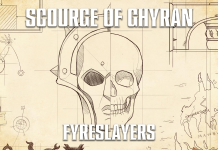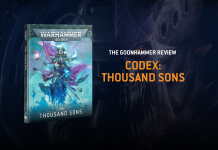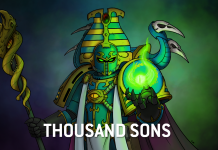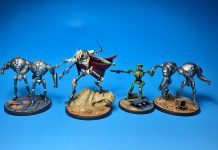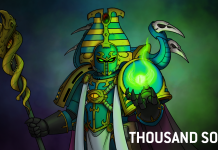After nearly 9(!!!) years of life—and capturing the attention of an audience unlike the TTRPG industry has ever seen—D&D 5e has become a staple of dice-throwing nerds everywhere. Its ubiquitous, it’s what the biggest streamers are playing, it’s what gets the name-drop in media (thank you Stranger Things), and it’s the first thing that gets suggested when a group of geeks gets the funny idea to hallucinate magical adventures together dictated by an unforgiving D20.
If you’re like me (and you should be, because I’m rad as hell), you’re probably thinking 5e is getting a little played out, a little long-in-the-tooth – and with D&D NEXT not looking to be that massive of an overhaul, you might be looking for some alternatives. You should be, at least, because variety is the spice of life, and the TTRPG space is filled with games that cover every genre, from rules-lite to so crunchy that you’ll chip your teeth, and everything in between.
Due to that absolute abundance, the Turn Order team have gathered a bunch of our favourites and must-trys to help you find something new to bring to the table.
Josh:
Pathfinder 2e: (PF2e)

If we’re talking about alternatives to D&D, then it’d be a crime not to mention the game that was designed to be the alternative to D&D.
Pathfinder 2e, much like D&D 5e, has departed from its source material of 3.5e, but not nearly as much as 5e. There’s some of that old-school, D&D 3.5e energy in there, refined and glossed over with some shiny new paint and better-thought out balance, that makes it way more approachable to pick up ‘n’ play while still maintaining a bit of that crunch. Notably there is expansive character building and a huge feat list.
It maintains that time-worn charm of a D20, but with a simplified, three-action economy, of which the game entirely runs off. Things cost you either 1 action, 2 actions, or 3 actions, and everything costs just about an action. It’s got a familiar set up of classes, for those who’d like to migrate – your clerics, your fighters, druids, and paladins, all with the smattering of fantasy races people have come to expect.
Stars without Number 2e: (SWN2e)
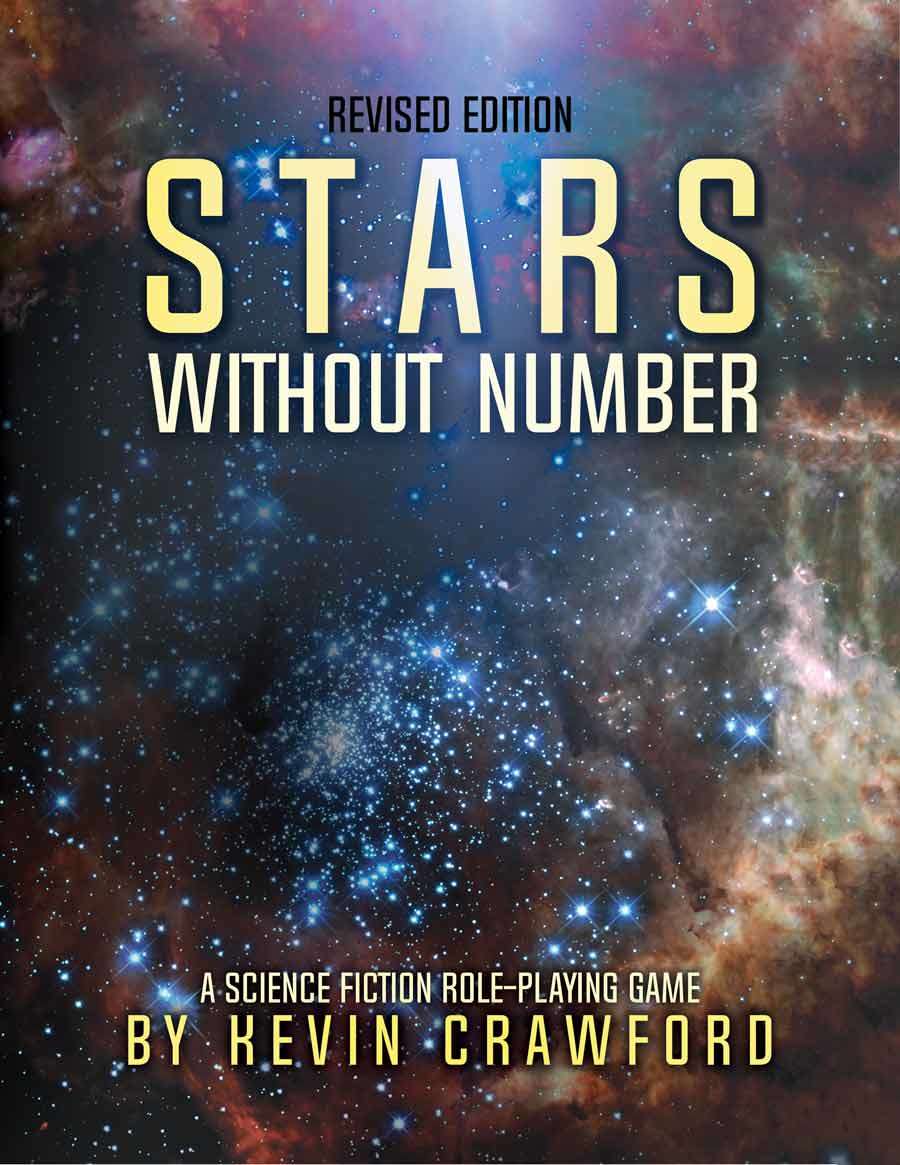
If you enjoy D&D 5e for its simplicity more than its setting, then SWN2e is a great try for broadening your TTRPG horizons. Set in the quite-far-future in which humanity has reached its peak, been set back to the dark ages by a apocalyptic event known as The Scream, and is now in the second age of expansion and exploration, SWN2e gives the players options for going on adventures that range from Pulp Fiction Sci-Fi, Star Wars style Space-opera (complete with space magicks!), gritty sci-fi realism ala the Expanse, and just about everything in between.
SWN2e employs a familiar D20 in familiar roles – such as saving throws, and attack rolls, but 2d6 with its skills. 2d6’s bell curve makes modifiers meaningful, and earning them through improving your skills and external factors is a big way to improve your character into delivering consistent results. Something old, and something new!
If you’re into fantasy, you can also try Worlds Without Number, which is based in the fantastical fantasyland of Latter Earth. Both systems aren’t incredibly different, but they aren’t the same either.
Traveler 2e:

If you’re looking for an alternative similar to D&D 5e… this isn’t it. Maybe if you really enjoy not making many choices during character creation? Even then, that’s a stretch. Because you finally want to try sci-fi after 9 years of fantasy? Sure. Let’s go with that one.
Listen, Traveler 2e absolutely fucking rocks. Its character creation is some of the most fun I’ve ever had, relying on random rolls as much as it does player-choice. You pick the tables to run on (mostly), and you let the dice pick the result – this goes from your attributes, your friends and family, whether you got into University or not, whether you graduated University, whether you were forced to drop out and become a conscript or discovered your (illegal) psionic potential and then had to go on the run–
You get the idea. It’s the finest example of emergent storytelling I’ve ever come across, and you’re encouraged to create your characters together, as a group, at the table, so you can justify these seemingly random story beats generated by the dice into a coherent character that you, then, get to embody – you all get to pitch in, weave into each others stories in something like D&D 5e just can’t achieve.
I understand the apprehension of people when it comes to random generation, I never enjoyed it much either in OSR games, but that’s because it felt designed to arbitrarily screw you. Traveler has negative events, definitely, complications that might knock your character off their path – but it’s an opportunity to develop. My fondest character was a family man detective rising through the ranks, before he was screwed by his supposed cop-buddies and left for dead, unable to advance in the law career, and rather than becoming a joe-schmoe conscript, he embarked on becoming the most despicable pirate his sector had seen in a long while. (Who knew cop training could help someone become a lethal criminal.)
All of this was told through lucky, then unlucky, then lucky again dice rolls that propelled my character through the ranks of two careers, and in the end left me with a bitter husk of a bastard.
Beyond character creation, Traveler’s system relies on a 2D6 system to get stuff done. Modifiers aren’t plentiful, but they are very impactful, and it runs smoothly without much complication. It’s a sci-fi setting, so adventures are aplenty from the get-go.
Luke:
Cyberpunk RED:
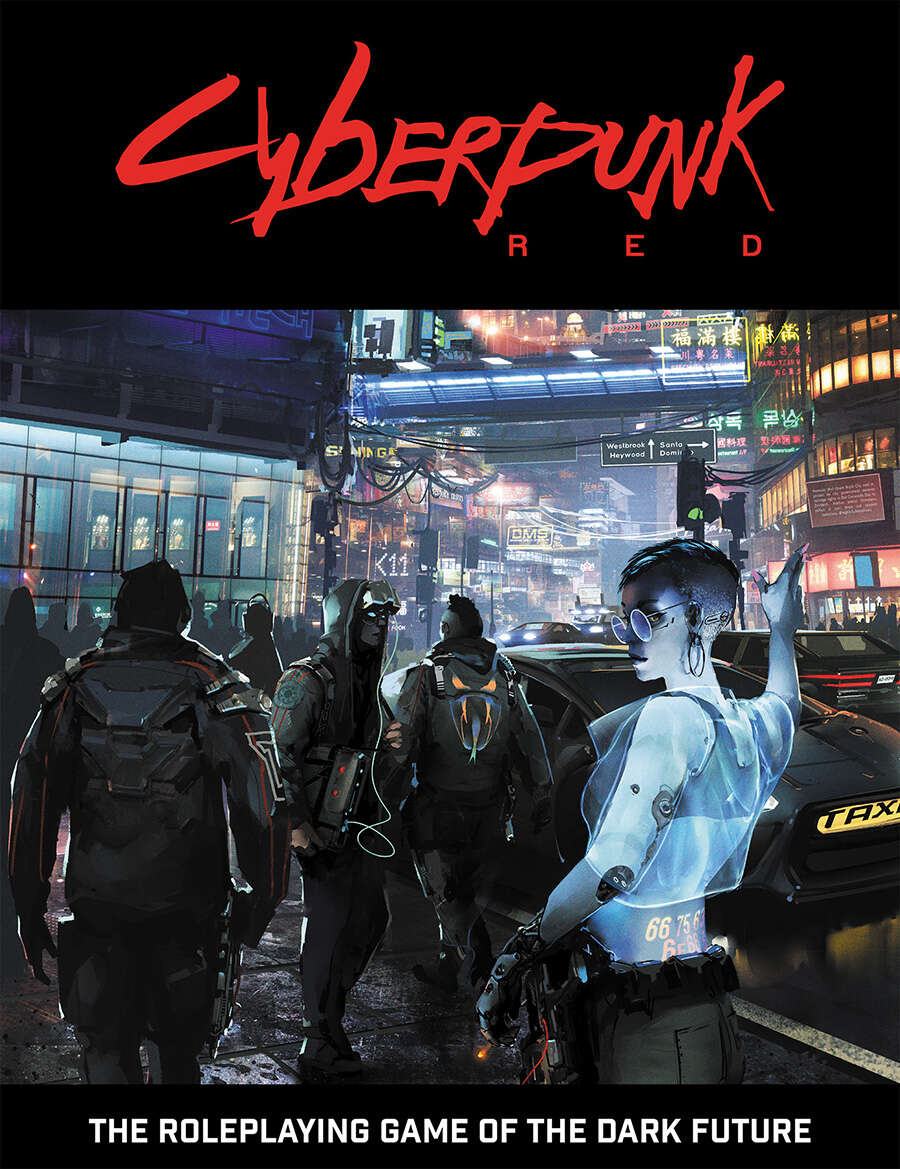
If you like the mechanics of D&D 5e but aren’t necessarily attached to the fantasy setting, Cyberpunk RED is a great game to check out.
Character creation may feel a bit overwhelming on first pass, but the result is mostly the same: you have various skills based on your stats, your Role is like a Class, your Lifepath is like a Background…. Cyberpunk tends to be a bit more detailed than D&D, but resulting gameplay is relatively similar. Combat rules may cause another learning curve but with only one action and one movement per turn, you’ll have time to figure it out on the fly. This is also a d10-based system with bonuses on rolled ones or tens, creating a more reliable success rate on the things your character is good at.
Night City, the location where all Cyberpunk stories happen, may feel small compared to many campaign worlds, but it creates a rich setting with complex relationships to explore between different factions. It’s also worth noting that there are comics, a video game and an anime all centered in the same Cyberpunk universe. It’s easy to familiarize yourself with the game’s world and lore without having to memorize a game handbook. Sci-fi fans who like a bit of crunch in their RPGs should enjoy this one.
Any Powered by the Apocalypse game:
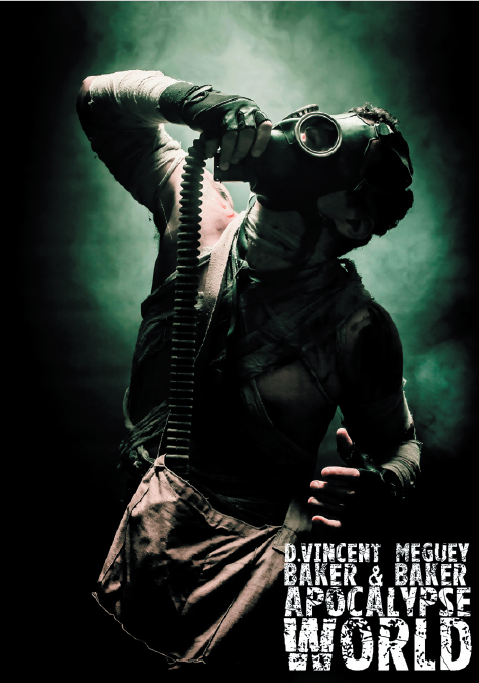
If you’re into TTRPGs and you have yet to play a Powered by the Apocalypse (PbtA) game, this is your sign. There’s a good reason the system is so ubiquitous- it’s just good. [Ed: We have done a proper review of the system here].
PbtA originates with Apocalypse World, which is already a pretty cool game that allows players to be creative with familiar post-apocalyptic tropes. The flavor text has been swapped out and rules have been adjusted for any genre you can think of- Dungeon World is the most famous D&D alternative. It even features the same base stats and some of the same classes, though the PbtA system runs on 2d6 and a much lower crunch level.
This system is great to try something almost entirely different in mechanics from D&D but nearly as popular- plus, once you learn the basic system, dozens of different games become a snap to learn. It also emphasizes worldbuilding and telling a story as a team, rather than the DM creating so much of the story.

Some PbtA games include:
- Monsterhearts, where you play fantasy creatures personified as teenagers dealing with real life and fantasy problems.
- Brindlewood Bay, where you play as elderly ladies solving an eldritch mystery.
- Monster of the Week, where you play as monster hunters inspired by series like Supernatural or Buffy.
- City of Mist, where you play as heroes based on your favorite stories, is not PbtA but uses a very similar system.
- Masks, where you play as superheroes.
- And way more, from sci-fi to horror, inspired by everything from Watership Down to M.A.S.H.
Marcy
So, it’s come to this. You’re looking to move on or away or around 5e in some way, and are hoping that the answers provided herein will give you what you need. So, allow me to be of… frankly no help at all by recommending Zine games, and one that’s a bit bigger but a small single box indie game-
Wait, no come back!
Zine TTRPGs run an entire gamut, and I don’t want this list to be considered representative in any way; there are far more of them in existence than I could cover even in a full article. What I will off the bat mention is that many of them use their own innate rules, modified from various TTRPG conventions, or are inspired by/riffs on the OSR (Old School Revival/Renaissance) movement. That is largely not important, but if you search Zine publishers, a lot of them will mention OSR, or a stance about OSR, so just figured I’d throw that in for you! Alright, enough rambling.
What are Zines good for? They’re great for spicing up your TTRPG nights with fun, wonky one offs, or even turning into short-form campaigns. I’ve found Zine inspired games to be amazing interludes, serve as spicy inspiration, or even get players reluctant to try TTRPGs into giving them a go. This is mostly because many of them come with pre-constructed tables and options for players, cutting down on some of the stickier aspects of character creation and the like. Also, I will offer that some of these may be hard to find, or out of print, as Zines tend to go, but there are so, so many, that if any of these strike your fancy, publishers like Exalted Funeral list new ones all the time. I urge you to get out of your comfort zone and get a little weird. For this, I’ll reference two of my favorites:
Obachan Panic!!!, designed by Vincent Chang (@flyaturtle)
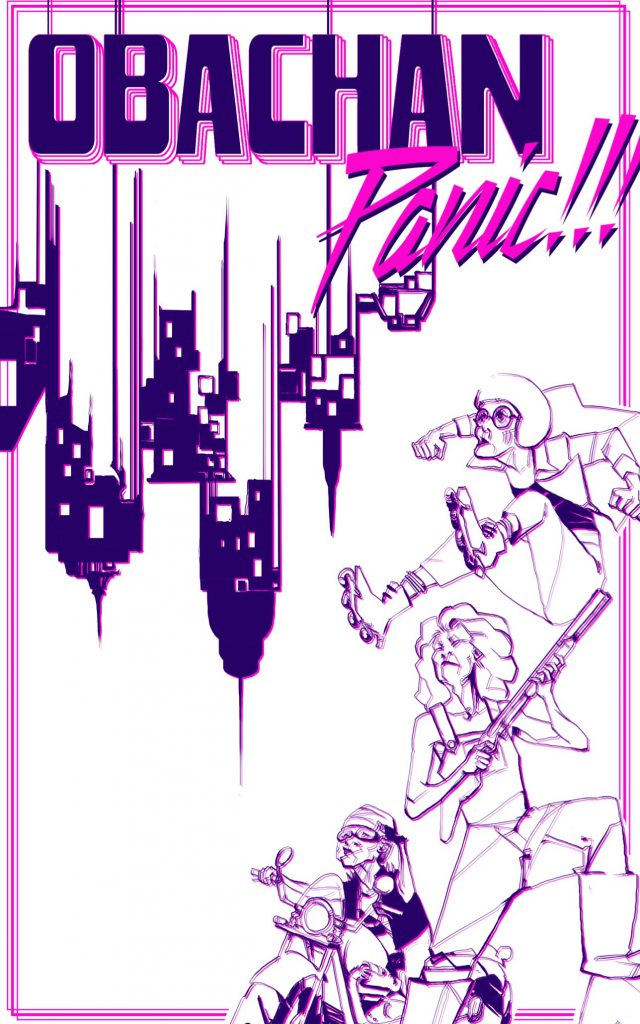
Obachan Panic!!! is probably the pinnacle of simple, fun, single sitting zine RPG silliness that will still allow your table lots of opportunities to tell interesting and fun stories as players assume the role of badass ‘Obachans’, Grannies and Aunties and everything inbetween, tasked with saving the world. The game invites you to download a free playpack, using scissors, markers, and the like to craft your very own Obachan (and the game is quick to point out that Obachan does NOT have to mean ‘old woman,’ and that ‘Obachan’ is a state of mind).
I really enjoy the way it helps players quickly devise the personality and backstory, and that it swings for the fences by going totally silly instead of spending character creation on skills and abilities. Instead of picking your starting stats and spells or tools, the game asks you to roll for outcomes like ‘Know who really killed Princess Di,’ how many kids/cats you have, what term they use for you, and the contents of your purse. The game even provides a great way to warm-up, asking the GM (Grandma Master) to describe a real ‘Obachan’ they know, sharing stories, pictures, and memories. I found this warm-up absolutely endearing, and every time I play it’s my favorite part of the game.
The game itself is broken into three ‘Acts’, and provides you with two pre-made ones in the book; I’ve not made my own yet, but every time I play with a group, one of the two acts in there is enough to have a few hours of good time with. I love Obachan Panic!!! because it is positive, bright, funny, and silly without being ‘stupid’, and asks very little of players to engage with it at all.
Aurora designed by Adam Vass
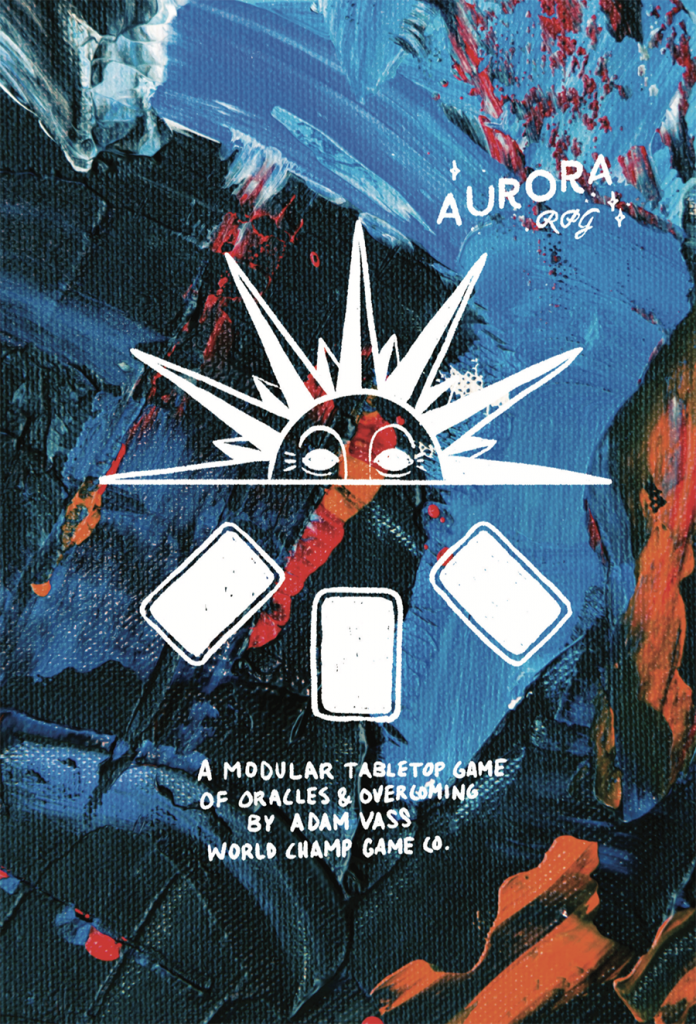
Aurora is a game for 2-6 players that involves the use of mail, but the idea behind it is so interesting and unique that I really love it. You do need a group that will be committed to the bit, so to speak, and this is not a game that you can play quickly or in one day. Aurora is a developing experience, but well worth the exploration of the space it provides. You and your players will utilize one another’s zip codes to mail one another things to create the cards then used to play the game.
Aurora might be the most ‘out there’ game on this list because it takes the role-playing elements one might traditionally expect and infuses them with an artistic touch, and is made to be played from a distance. If you’ve ever found that you and your discord friends are having a hard time getting together for a D&D night, Aurora may be a great option because much of the set-up takes place through the mail, and play sessions over something like discord and roll20 are simple, quick, and engaging, which allow for a lot of variety and drop-in/drop-out possibilities.
Aurora is also unique, in my experience, because it lowers the limits needed to play. Players don’t need huge rulebooks and character sheets, and the few times I’ve experienced it, the crafting element of the card deck really brought in people who were reluctant to try or shy about roleplaying because it gave them agency over what experience they were going to have by literally making the materials through which they would then play.
Mausritter by Isaac Williams

Mausritter describes itself as a ‘sword-and-whiskers’ roleplaying game, in which players assume the role of anthropomorphic mice. Aside from the fact that boxed copies of Mausritter‘s various printings always hedge towards being absolutely gorgeous (seriously, it is one of the nicest games I own), the game absolutely nails the idea of being a little mouse on a ‘big’ adventure, the type that you might remember from everything from Stuart Little to the Borrowers in terms of scaling. The game comes with everything you and your players need to play: a rulebook, character sheets, inventory tokens, and while more involved than the other two games above in my list (Excepting Aurora’s literal physical mailing times), plays a bit more like a ‘traditional’ TTRPG.
The game asks players to invent their own mice, and to then throw them into the dangerous world of mice adventures. Enemies and encounters include what one might expect: snakes, cats, birds, and yet also allows players to use things like magic, equipment, and weapons. Mice creation uses some quick dice rolling to help get things started, and then the GM is given tools to help set the scene and explore the world created for the campaign in whatever ways they want.
What I like about Mausritter is that the box is self-contained, but is amenable to hacking. Don’t want to use a traditional D20 system? Borrow from PBTA, it works just as well. The big thing about the game that I enjoy is the world-building, by both giving specific limits (you are literally a mouse in a world where a cat is functionally a dragon), while also allowing a lot of creativity. Instead of saddling players with huge tomes of lore and terms they may or may not ever remember, Mausritter is simple, imaginative, and yet scratches the itch of what a lot of people probably THINK a TTRPG is going to be like, but doesn’t end up actually being anything but a combat simulator.
(As a closing teaser, there is a fourth game I want to mention, but it deserves its own review, Jiangshi: Blood in the Banquet Hall. I’ll tell all about that game some other time.)

